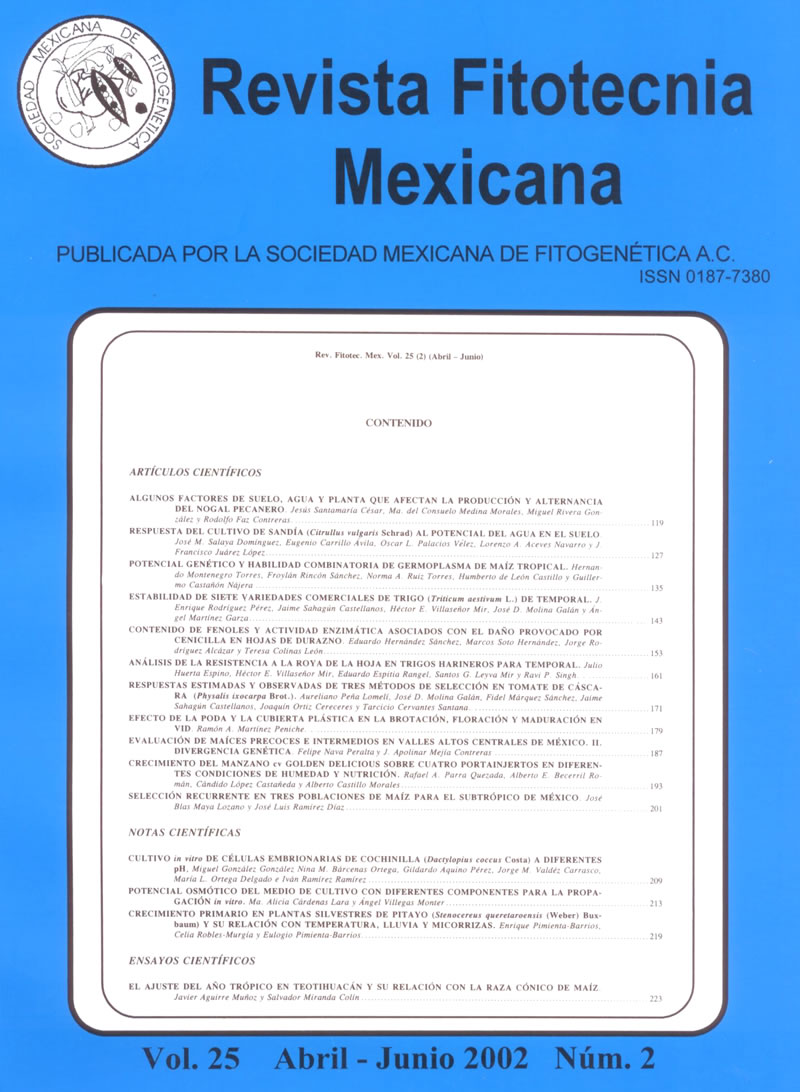RESPUESTAS ESTIMADAS Y OBSERVADAS DE TRES MÉTODOS DE SELECCIÓN EN TOMATE DE CÁSCARA (Physalis ixocarpa Brot.)
Contenido principal del artículo
Resumen
En tomate de cáscara (Physalis ixocarpa Brot.) la selección masal visual estratificada (SMVE) ha sido un método eficiente para incrementar el rendimiento, pero cada vez es más difícil distinguir los mejores individuos en el lote de selección, por lo que es pertinente evaluar métodos más eficientes con el fin de determinar la mejor opción. El objetivo de este estudio fue predecir la respuesta a la selección con los métodos de SMVE, selección familial de medios hermanos (SFMH) y selección combinada de medios hermanos (SCMH), en la variedad CHF1-Chapingo de tomate de cáscara, y comparar los valores esperados (RE) con sus correspondientes observados (RO). Con una muestra aleatoria de 200 familias de medios hermanos maternos, evaluadas en tres ambientes durante el ciclo primavera-verano de 1995 y 1996, se estimaron los componentes de varianza para estimar las RE de los tres métodos. El primer ciclo de selección de cada método, la variedad CHF1-Chapingo, y seis poblaciones más, se evaluaron en tres ambientes durante el ciclo primavera-verano de 1996. El primer corte fue más importante que el segundo en relación con la respuesta a la selección. Con base en las RE para el carácter rendimiento en el primer corte, la SFMH y la SCMH fueron respectivamente 34 y 18 % superiores a la SMVE. Con base en RO, la SMVE y la SFMH fueron similares en su eficiencia para incrementar el rendimiento total (2.8 y 2.5 %, respectivamente), en tanto que en la SCMH no hubo ganancia en este carácter (0.2 %). La concordancia entre RE y RO fue alta (> 90 %) para la SMVE y baja (< 30 %) para la SCMH.

